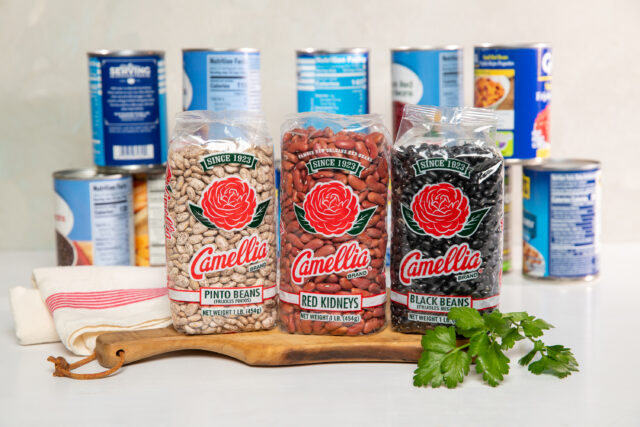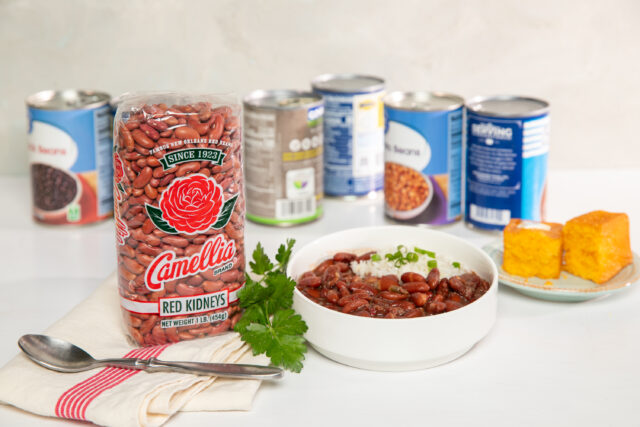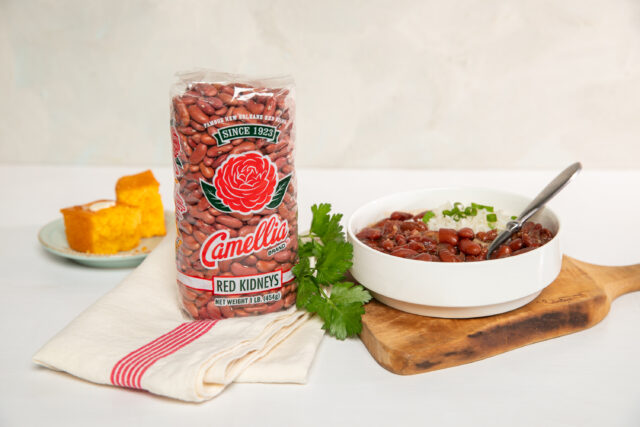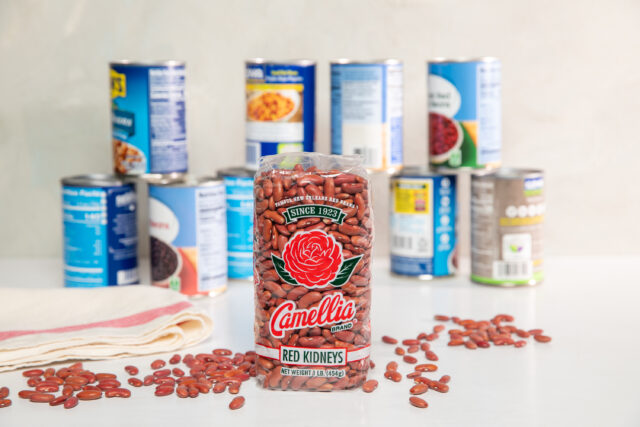Dry Beans vs. Canned: What’s the Difference?

When you’re in the grocery store aisle, gazing at the shelves, you’ve probably wondered — does it really matter whether I choose dried beans or canned? And what’s the difference, anyhow?
Well, here’s the scoop — broken down by cost & yield, taste, convenience, and more — so you can make an informed decision.
Cost & Yield
When it comes to value, dried beans still come out on top.
A 15-oz can of beans typically costs $1.20–$1.50, depending on brand and retailer, and yields about 1½–1¾ cups of drained beans, according to the Bean Institute.
By comparison, a 1-lb bag of dried beans averages about $1.50–$1.75 nationally according to the U.S. Bureau of Labor Statistics / FRED and yields 5–6 cups of cooked beans — roughly 10–12 servings (½ cup cooked = 1 serving, per the USDA Dietary Guidelines). That works out to roughly 15–25¢ per serving.
For premium, higher-quality brands like Camellia, which are stocked at major grocers, retail prices typically range from $2.20 to $2.80 per pound. Even at that premium, a pound of Camellia beans delivers about twice the yield per dollar compared to canned beans, along with the freshness, consistency, and flavor that make them a Southern kitchen staple.
Read more about how beans stretch your grocery budget in our Budget Meals with Beans: Affordable Comfort Food for Every Table post.

The Sodium Factor
Using dried beans lets you control the sodium. Beans are naturally sodium-free, but canned beans can contain added salt — for example, around 200 mg per ½-cup serving for canned pinto beans. Draining helps, and draining plus rinsing can remove up to about 40% of the sodium. Cooking dried beans from scratch lets you season to taste without added sodium, giving you full control over what’s in your pot. (The Bean Institute – Dry vs. Canned)
What about BPA?
Dried beans are BPA-free. You’ve probably heard or read about the controversial use of BPA in food containers. Most cans are lined with BPA-containing resin, and according to the Mayo Clinic, some research has shown that BPA can seep into food from containers that are made with it. Read more about their advice for reducing exposure to BPA, including cutting back on the use of canned foods. Using dried beans vs. canned lets you avoid the this issue altogether.

Taste
Cooked, dried beans just taste better. While there’s no scientific evidence to point to, it’s been written again and again that those who know their way around a kitchen prefer the taste, texture, and depth of flavor of homemade beans. In fact, canned beans can have a metallic taste, or they can be too salty or mushy. Cooking with dried beans lets you season them to to your taste and control how long you cook them — making sure they’re just as firm or as soft as you like.

Convenience
Dried beans are easier to cook than you think. At first glance, you might think that canned beans win in the convenience category. And if you’re in a pinch and haven’t planned ahead, canned beans can do the job. But if you want the health, price, and taste benefits of using dried beans, there are several ways to make them both easy and convenient. First, if you’re home but busy doing other things, cover them with water in a pot, add aromatics and seasonings, and put on a back burner to simmer for a couple of hours. They don’t need much attention! If you can’t be home to cook, consider throwing dried beans in a slow cooker with water, chopped veggies, and meats, and cook on low heat all day long. They’ll be soft and creamy just in time for dinner. There’s also the option of using a pressure cooker — which is a great way to cook dried beans in a hurry. And finally, the best way to wean yourself from the last-minute-canned-bean-habit is to cook dried beans in large batches, portion into small storage bags, and freeze. Then, when you need beans for a recipe, just grab them from the freezer instead of reaching for a can. Read more about cooking methods and storage here.